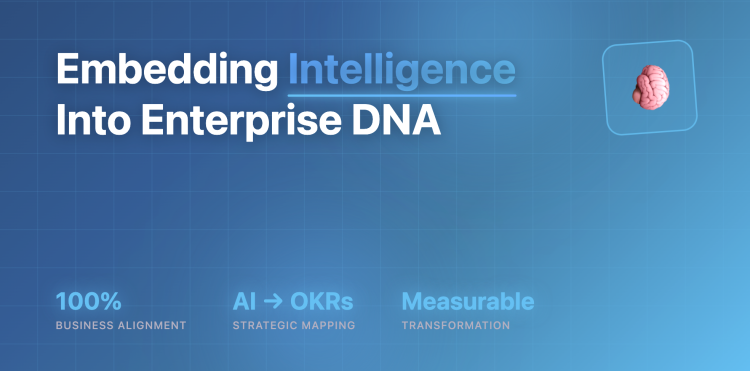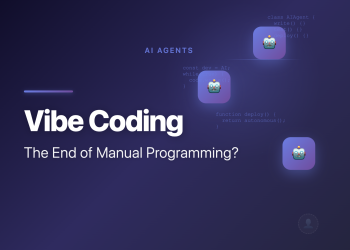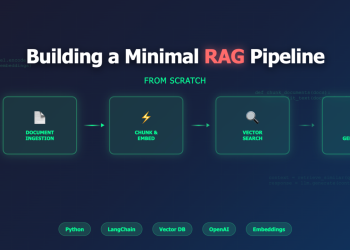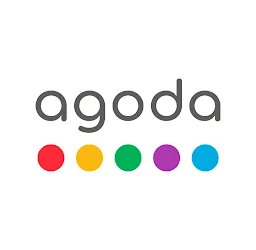🧭 From “Tech Executor” to “Strategic Transformer”
The days when a CTO’s success was measured by system uptime or delivery velocity are behind us.
AI has shifted the expectation. Boards no longer ask:
“How many releases did we ship this quarter?” They now ask: “How much smarter did our organization become?”
In this new era, the CTO’s role is to transform technology from a cost center into an intelligence engine. That means new Key Performance Indicators (KPIs) — ones that track not lines of code, but lines of business impact.
💡 1. AI Adoption & Integration Rate
AI adoption should now be a core organizational KPI, not a side project metric.
Every department — engineering, operations, marketing, finance — can leverage AI copilots or automation. The right question for a CTO is:
“What percentage of our workflows are AI-augmented?”
Start small: automate reporting, apply AI for QA testing, or deploy LLM assistants for customer ops. Then, scale integration across the business. Target: consistent quarter-on-quarter growth in AI-enabled processes.
💰 2. ROI on AI Investments
AI must be treated like any other strategic investment — measurable, accountable, and outcome-driven.
To justify continued AI spending, CTOs should define clear ROI metrics:
-
Cost savings from automation (hours or infra reduced)
-
Revenue uplift from AI-powered personalization or recommendations
-
Cycle-time reduction in product delivery
Instead of celebrating “AI deployment,” measure time-to-value — how quickly an AI initiative delivers real business return.
👨💻 3. Developer Productivity in the AI Era
Engineering output now depends as much on AI enablement as on individual skill.
Metrics to track include:
-
Reduction in development or review cycle times after AI adoption
-
% of commits generated or assisted by AI tools
-
Developer satisfaction with AI workflows
The modern productivity KPI isn’t “story points completed” — it’s AI-amplified throughput: how effectively developers leverage AI to ship better software faster.
⚙️ 4. Automation Coverage
AI’s most direct value lies in automation. CTOs should evaluate what percentage of recurring business tasks — not just tech tasks — have been automated.
Automation KPIs might include:
-
% of back-office workflows handled by AI
-
% of incident triage or support tickets resolved autonomously
-
Reduction in human-hours spent on manual reporting
This converts technology efficiency into tangible financial leverage.
🧑🏫 5. Talent Transformation & AI Fluency
AI readiness is not only about infrastructure — it’s about people. An organization’s future depends on how quickly its teams learn to collaborate with AI.
Key metrics:
-
% of employees trained or certified on AI tools
-
of AI-driven initiatives launched by non-AI teams
-
Employee AI proficiency score (survey-based)
The KPI to aim for: “AI Fluency per Function.” When marketing, sales, and operations can independently ideate AI use cases, the company becomes self-sustaining in innovation.
🧮 6. Innovation Velocity
AI enables faster experimentation and iteration. Track how quickly new ideas turn into prototypes — and how many reach production.
Useful metrics:
-
Avg. time from idea → prototype → deployment
-
% of AI experiments converted to production models
-
Frequency of internal hackathons or AI sprints
Faster innovation cycles indicate an organization with a strong feedback loop and culture of learning — both essential for competing in AI-driven markets.
🌍 7. Business Alignment & Value Realization
Every AI project should link directly to a business OKR — revenue growth, cost reduction, or experience enhancement.
The CTO’s final KPI is alignment:
“What percentage of AI projects map directly to strategic business goals?”
AI should move the company’s core metrics, not just technical ones. When technology KPIs and board KPIs merge, that’s when AI delivers real enterprise transformation.
🧩 Closing Thought
The next generation of CTOs will be judged not by how many systems they modernize, but by how much intelligence they embed into their organizations.
In the age of AI, leadership is no longer about stability — it’s about adaptability, insight, and measurable transformation.
The smartest CTOs don’t just ship features. They ship intelligence — and they measure it.









Discussion about this post